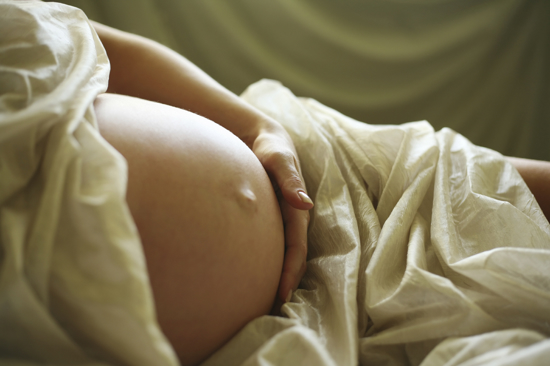About induced labour
All assistance provided during the delivery process is designed to ensure the best possible outcome for mother and child. Naturally going into labour around the due date (between weeks 37 and 42 of pregnancy) usually results in the easiest delivery.
Sometimes, factors arise during pregnancy that require labour to be induced before it starts naturally in order to avoid serious complications for the mother and/or child.
The most common reasons for induction are:
- high blood pressure/pre-eclampsia (in Norwegian)
- diabetes/gestational diabetes
- slow foetal growth (small baby)
- being over 38 years of age is also a contributory factor (some maternity wards set the age threshold at 39)
- not having given birth 11 days after the ultrasound due date (42 weeks)
How long does it take?
It is difficult to know how long induction will take. If your labour is induced, you should be prepared for it to take some time before contractions start and you give birth. This can take several days for some women, while for others the process is faster.
It is never possible to say exactly how long the delivery will take. Factors that can affect how long the delivery takes include:
- when in the pregnancy the birth is induced
- whether you have been having contractions
- whether your waters have broken
- whether you have given birth before

Waters breaking (in Norwegian)
If you suspect that your waters have broken, even if there is just a trickle, contact the maternity ward where you are to give birth.
Illustration: iStockphoto
Well-being examination week 41
All pregnant women are offered a well-being examination at their antenatal health centre. This is performed 4 to 7 days after the ultrasound due date if you have no risk factors, and earlier if there are some elevated risk factors (high BMI, history of small babies, IVF or similar factors).
The midwife at the health centre will refer you for this examination. The well-being examination can be arranged for the first working day that is practical for both the woman and the hospital.
Some maternity wards may perform well-being examinations a bit later (41+0 to 41+3 days).
What happens at a well-being examination?
Well-being check-ups are more detailed antenatal examinations. Remember to bring your pregnancy health card with you, as well as any other documents given to you by your midwife or doctor for examinations.
A plan for further treatment and monitoring will be drawn up together with you, based on the examination and an assessment of your condition and that of your baby.
Most women go home after the first full-term examination with a new appointment for a second full-term examination (past due date examination). In most cases, labour will start by itself before the past due date examination.
Different methods for inducing labour
During pregnancy, the cervix (neck of your womb) is firm and several centimetres long. As you approach delivery, the cervix gradually ripens. This means that it becomes softer and shorter and starts to dilate (open).
Various methods can be used to induce labour. The method most suitable for you will be decided by a doctor or midwife. The degree of cervix ripening will help determine the type of induction method used.
The doctor and midwife will assess the cervix’s degree of ripening (Bishop score) before and during induction to monitor progress.
Ripening the cervix with a balloon catheter
If the cervix is not ripening well, induction will often start with the insertion of a Foley catheter, also called a balloon. A balloon catheter is a rubber catheter with a balloon at the end.
Ripening the cervix with medication (prostaglandin)
The aim of this method is to ripen the cervix and stimulate contractions. The prostaglandin is produced synthetically and is used to achieve this effect. It is given in the form of a capsule that is inserted into the vagina (suppository) or a tablet that you swallow.
Artificially breaking your waters (amniotomy)
Once your cervix has started to dilate, the midwife or doctor will rupture the amniotic membrane using a plastic hook inserted via the vagina. This is called amniotomy and is not painful for you or your child. This will start a flow that stimulates contractions.
Contraction stimulating drip
If your contractions do not strengthen and become more regular within 2 to 3 hours after your waters have been broken, you will be started on an Oxytocin drip to stimulate contractions. This will encourage your uterus to contract and establish contractions.